My Favourite Pieces: Bertrand Mak — ‘Vintage is about scholarship and rarity, not money’
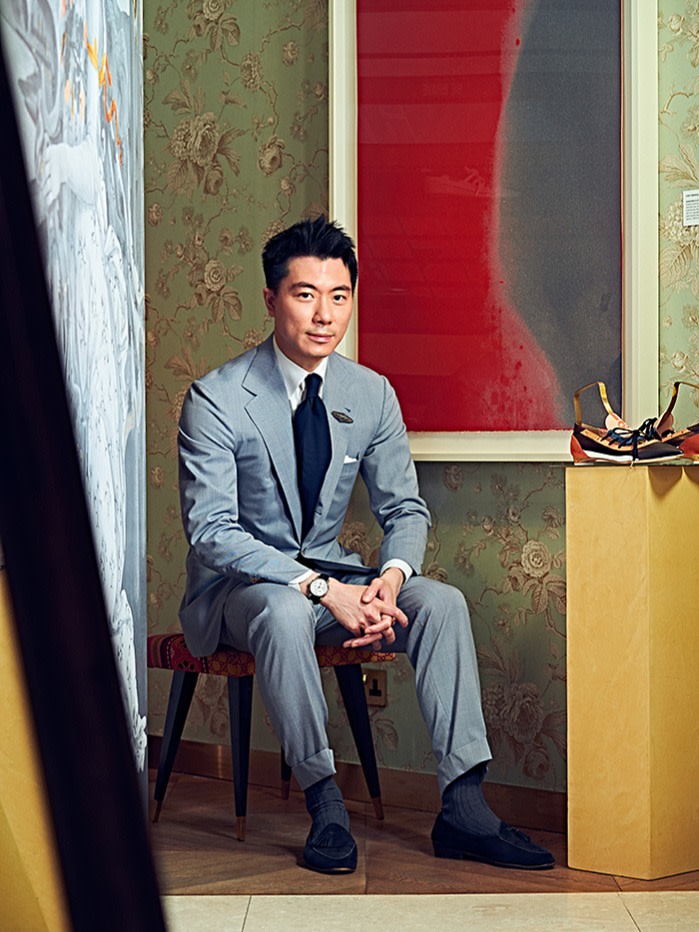
Roula Khalaf, Editor of the FT, selects her favourite stories in this weekly newsletter.
The seed of Bertrand Mak’s interest in watches was planted when, as a toddler, he “mucked about” in the Hong Kong watch boutique founded by the father of his godfather.
But it was at boarding school in the UK that the luxury brand owner’s head was turned. “A mate of mine had a Rolex GMT and it caught my attention, not because of the merit of the watch but because it was a Rolex and it was quite flashy,” he says.
His parents did not oblige, instead giving him the “sensible choice” of an Omega Seamaster for his 18th birthday. At university, he began “lurking” in online watch forums and saved his allowance to buy a like-new Panerai behind his parents’ back. From then, there was “no turning back”.
Mr Mak, 38, applies the “obsessive attention to detail” he has learnt from scrutinising watches through a loupe to his working life producing accessories incorporating 24-carat gold leaf. He founded his company Sauvereign in June as a vehicle for the expansion of R Sanderson, the business he launched with UK shoemaker Rupert Sanderson, into objects beyond footwear.
Mr Mak’s watch collecting has evolved too. He once experienced a “greed” to own everything but over the years has narrowed his selection to about a dozen pieces that “really resonate” with him.
Patek Philippe Nautilus (2003)
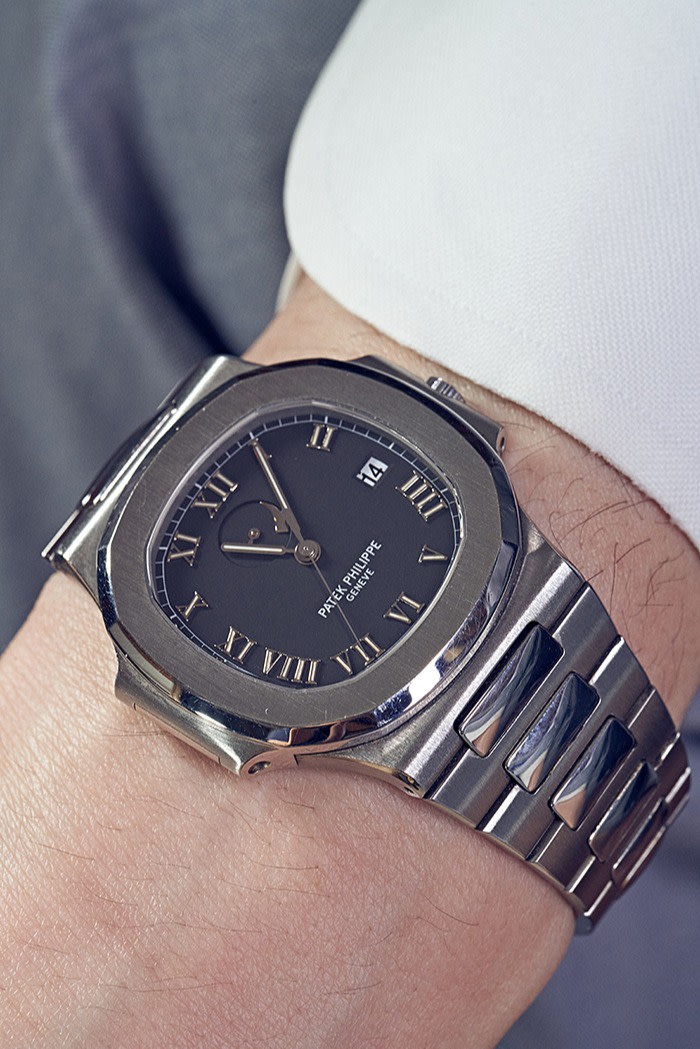
Mr Mak’s father, a hospital doctor and fellow watch enthusiast, bought this stainless steel Nautilus to mark his survival of the Sars outbreak in Hong Kong in 2003. “It was a very painful process,” says Mr Mak, who was living in the UK at the time. “He had to quarantine himself from my mother and it was a very lonely few months.”
Mr Mak and his father, who is now involved in the fight against coronavirus, share the sports watch. Mr Mak feels an “emotional attachment” to the piece, which was bought from his godfather’s store. “I could go out there and pay a premium and buy the exact same watch, but it wouldn’t be the same,” he says.
Omega (1943)
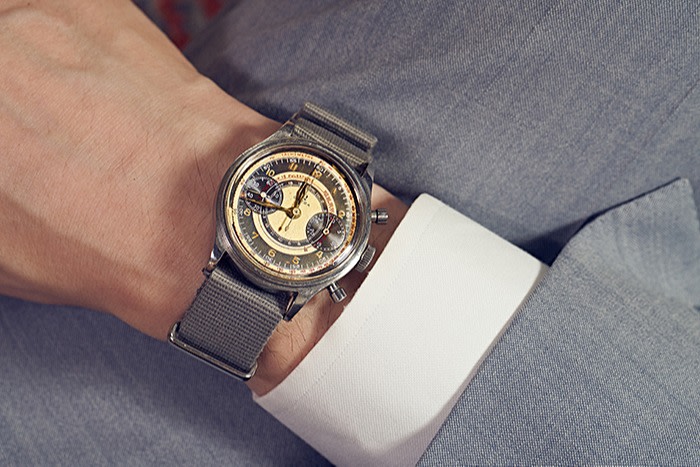
Thanks to his father, Mr Mak has a “soft spot” for watches with pulsation dials, which allow the wearer to measure their heart rate. “I’m not a physician myself, but this is something that to my dad is deeply personal — and it’s functional,” he says.
He bought this stainless steel chronograph, one of four Omegas in his collection, at auction and admires its “unorthodox” multi-scale display. “I don’t want something that is easily understood by everybody,” he says. He wears the watch on a nylon Nato strap.
Universal Genève Medico-Compax (1951)
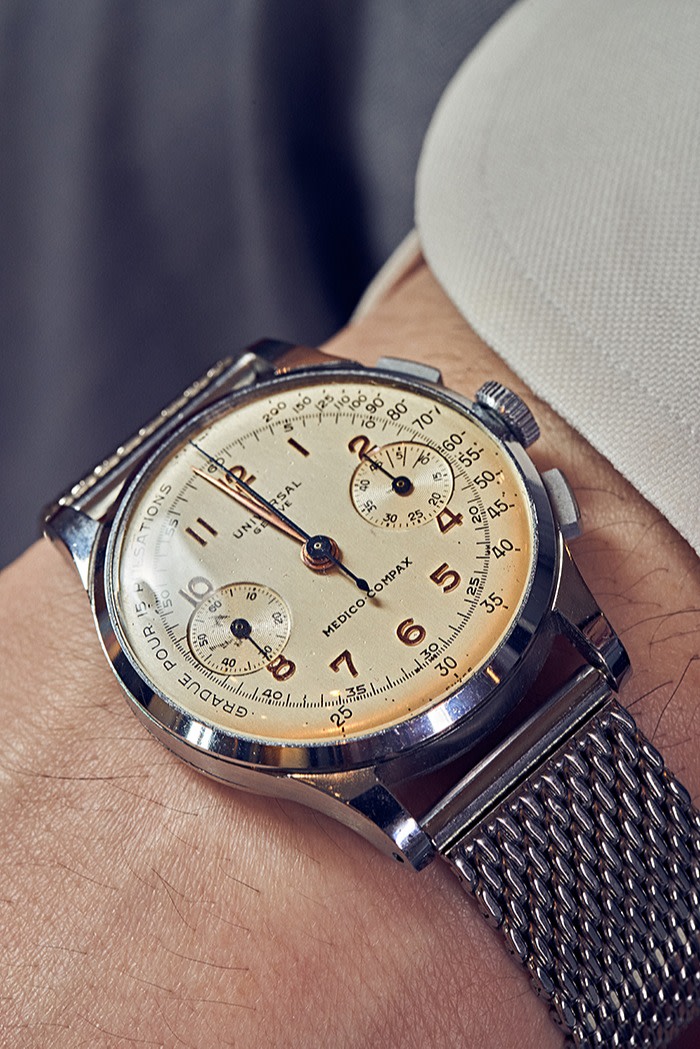
This is another watch with a pulsometric scale that Mr Mak found at auction. He was attracted by the “completely understated” stainless steel and Universal’s small size: its case diameter is 34.5mm.
Interest in the manufacture has grown since Mr Mak bought the rare piece four years ago as prices for the “usual suspects”, such as Rolex, have risen. “I haven’t really acquired any more vintage watches because the prices are completely unjustifiable,” he says.
Mr Mak, who worked in his godfather’s shop upon graduation and later as a watch specialist for auction house Christie’s, likes the idea that every vintage piece is unique because of its ownership and care history. “Why I have an affinity with vintage is because it’s about scholarship, it’s about rarity, it’s about knowledge, it’s about luck; it’s not about money,” he says.
Voutilainen Observatoire piece unique (2009-10)
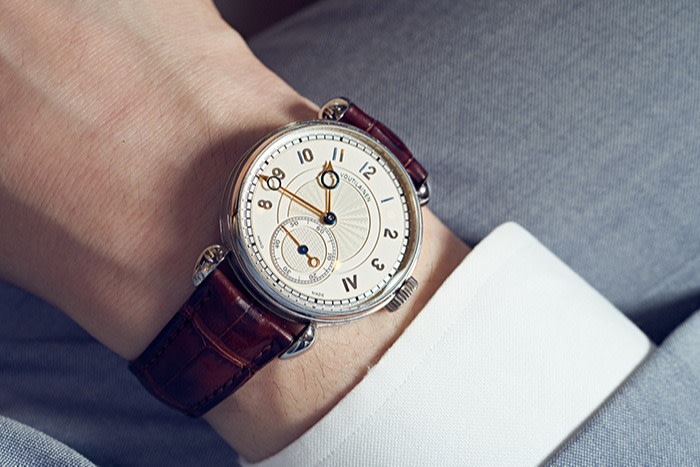
Alongside his interest in vintage pieces, Mr Mak is a “great champion” of the Finnish independent watchmaker Kari Voutilainen.
He wears his unique platinum Observatoire every day “because it’s the genesis of everything”. If he had not stopped off in London in 2009 on his way to meet Mr Voutilainen to deliver the Peseux movement he had sourced for this watch, Mr Mak would not have come across Rupert Sanderson.
Mr Mak says the unique piece, which has Arabic numerals, apart from a “lucky” Roman numeral “IV” coinciding with his birth in April, is “more than just a watch”. “Every time I look at it I discover something new . . . It’s really a journey of exploration,” he says.
Customised Voutilainen Chronograph Masterpiece (2010-11)
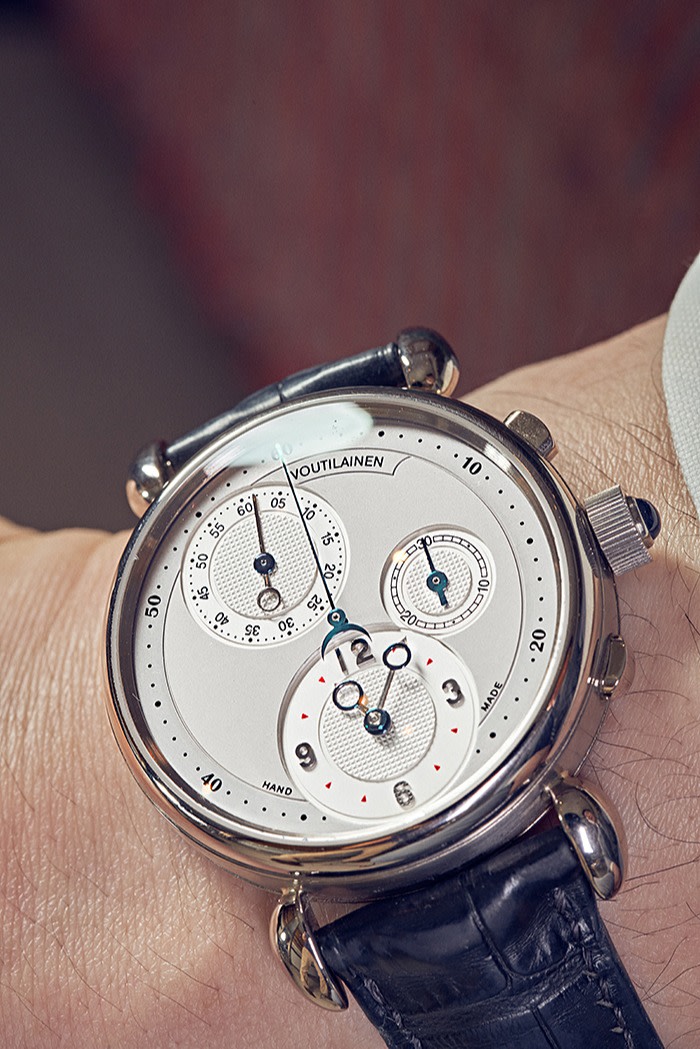
Mr Mak bought this white gold chronograph, one of 10 made, from a dealer at Helsinki airport, then asked Mr Voutilainen to customise it. Changes included replacing the deployment clasp with a tang buckle.
Mr Mak, who has been working with Mr Voutilainen on another watch — yet to be delivered — for more than six years, says their relationship is a “meeting of minds”.
“He really understands why I have a particular request and . . . for him it’s also a technical challenge that he has to resolve with his team,” Mr Mak says.
As Mr Mak is motivated by the concept of legacy and what he will leave behind for the next generation, these pieces through which he can influence and inform the maker are his ideal watches. “My dream is to be able to have my own contribution towards a particular object,” he says.
Comments